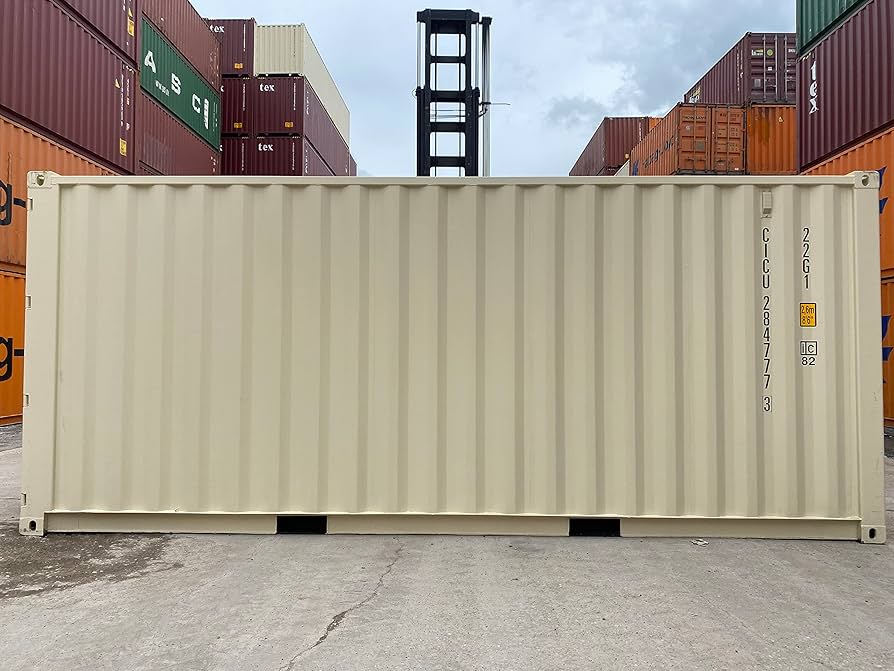The Future of Shipping Containers in Global Trade

Shipping containers have revolutionized global trade since their introduction in the mid-20th century. Their standardization and efficiency have facilitated the rapid movement of goods across vast distances, reshaping international commerce. However, as we look toward the future, the role of shipping containers is poised for further transformation driven by technological advancements, changing economic landscapes, and evolving environmental concerns.
Technological Advancements
The shipping container industry is experiencing a technological renaissance. Innovations such as the Internet of Things (IoT), blockchain, and advanced sensors are set to redefine how containers are tracked, managed, and utilized.
- IoT and Smart Containers: IoT technology is making containers “smart.” Equipped with sensors and GPS, these containers can now provide real-time data on location, temperature, and even security. This advancement not only enhances tracking and management but also improves cargo safety. For instance, perishable goods can be monitored for temperature fluctuations, reducing spoilage and ensuring quality.
- Blockchain for Transparency: Blockchain technology offers a solution to many of the inefficiencies and lack of transparency in global trade. By creating an immutable ledger of transactions, blockchain can streamline documentation processes, reduce fraud, and enhance trust between parties. This technology could lead to a more transparent and efficient supply chain, mitigating issues such as cargo theft and disputes over shipments.
- Automation and Robotics: The rise of automation and robotics is transforming port operations. Automated cranes, robots, and drones are increasingly used to handle, transport, and inspect containers, resulting in faster turnaround times and reduced human error. This shift is crucial as ports handle ever-growing volumes of trade, and automation promises to enhance operational efficiency and safety.
Environmental Considerations
The environmental impact of shipping containers is another critical aspect shaping their future. With growing concerns about climate change and sustainability, the industry is under pressure to reduce its carbon footprint.
- Eco-Friendly Materials: The use of sustainable materials in container manufacturing is gaining traction. Innovations such as recyclable materials and eco-friendly coatings are being explored to reduce the environmental impact of container production. Additionally, there is increasing interest in repurposing old containers for new uses, thereby extending their lifecycle and reducing waste.
- Energy Efficiency: The push for greener practices extends to energy efficiency in shipping operations. Advances in fuel technology, such as the development of alternative fuels and more efficient engines, are being implemented to lower emissions. Furthermore, initiatives like wind-assisted propulsion and solar power integration are being tested to enhance the sustainability of container ships.
- Circular Economy: The concept of a circular economy, where products are reused, refurbished, and recycled, is gaining momentum. In the context of shipping containers, this means creating systems where containers are continuously repurposed and maintained rather than discarded. This approach not only conserves resources but also reduces waste and environmental impact.
Economic and Geopolitical Shifts
Economic and geopolitical factors are also influencing the future of shipping containers. As global trade patterns shift and new markets emerge, the demand for containers and their usage will evolve.
- Growth of Emerging Markets: The rise of emerging economies, particularly in Asia and Africa, is driving new trade routes and logistics challenges. The demand for shipping containers in these regions is increasing as they become major players in global trade. This shift necessitates investment in infrastructure and adaptation to new market conditions.
- Trade Policies and Regulations: Changes in trade policies and international regulations can impact container usage. For instance, tariffs, trade agreements, and regulatory standards influence shipping practices and container management. Staying adaptable to these changes is crucial for maintaining efficiency and compliance in global trade.
- Port Congestion and Infrastructure: As global trade volume grows, so does the strain on port infrastructure. Congestion at major ports can lead to delays and increased costs. To address this, investments in port expansion, modernization, and efficient logistics solutions are essential to accommodate the future demands of global trade.
Conclusion
The future of shipping containers in global trade is marked by technological innovation, environmental consciousness, and economic shifts. As the industry adapts to these changes, the role of containers will continue to evolve, offering new opportunities for efficiency and sustainability. Embracing these advancements and addressing emerging challenges will be key to maintaining the vital role that shipping containers play in connecting global markets and driving international commerce.
In navigating the future, stakeholders in the shipping and logistics sectors must stay informed and proactive, leveraging technology and sustainable practices to shape a resilient and efficient global trade system.

